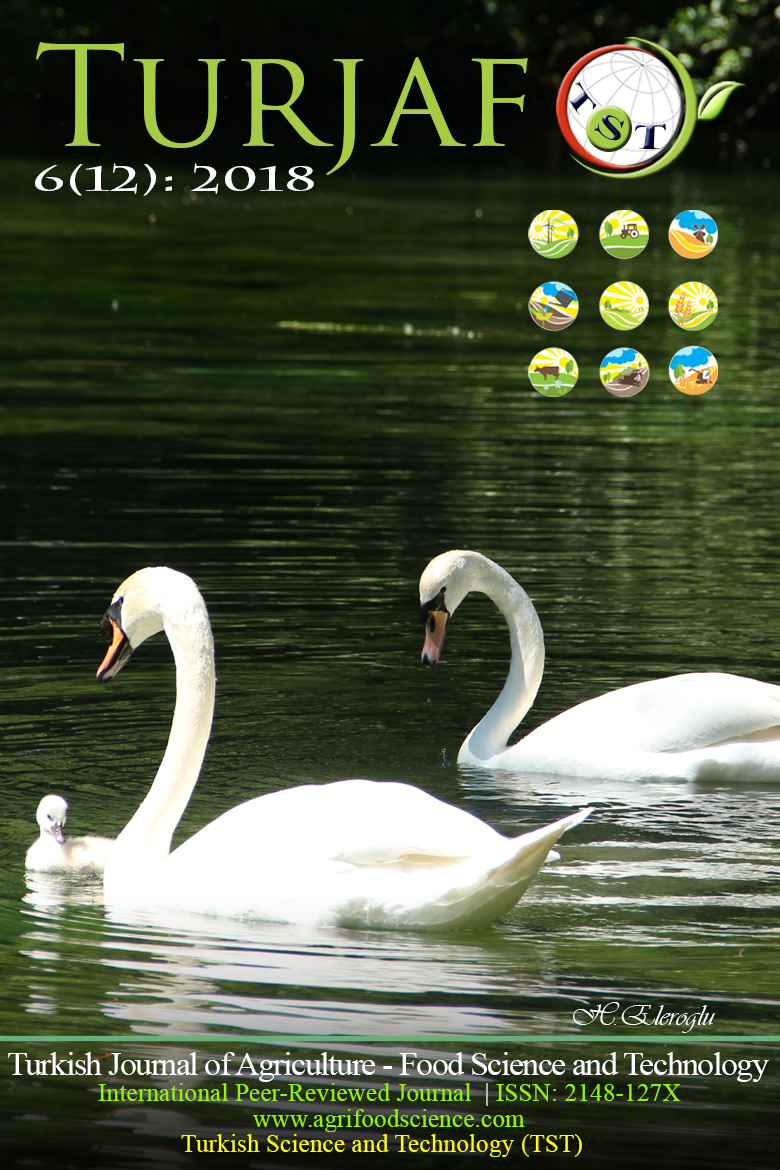Changes in Some Soil Chemical and Biological Properties on the Growing Season of Sesame in Çukurova Region
DOI:
https://doi.org/10.24925/turjaf.v6i12.1802-1808.2145Keywords:
Soil nutrients, Sesamum indicum L., Carbon and nitrogen mineralization, Soil microbial counts, Microbial activityAbstract
In present study, some soil characteristics of Sesamum indicum L. (Sesame) and its adjacent blank field (control) were compared in a growing season as pre (PreC and PreS) and post (PostC and PostS) harvest in Adana, Turkey. Soil macro (C, N, P and K) and micronutrients (Cu, Zn, Mn and Fe), carbon (Cmin) and nitrogen mineralizations and soil aerobic bacteria and fungi counts were determined in before and after harvest soils. Soils were humidified at 80% of their field capacity and then monitored for 45 days at 28 °C to determine soil carbon (Cmin) and nitrogen (Nmin) mineralization. Generally, macro and micronutrients (Cu, Zn, Mn and Fe) were higher in control than sesame field except phosphorus (P2O5) and there were found significant differences between them before and after harvest. Aerobic bacteria and fungi populations were decreased after harvest while fungi populations were increased in sesame soils compared to control. Soil CO2-C evolution was higher in sesame field than control. Rates of carbon mineralization was in order as following PostC < PreC < PostS< PreS. Rate of Nmin was significantly higher in sesame soils before harvest but it was lower after harvest compared to control. Carbon mineralization rates in sesame grown soils were significantly decreased and it was in order as following PostC < PreC < PostS < PreS. Decrease in soil carbon mineralization after harvest can be explained with decrease in soil microbial populations in short term.Downloads
Published
17.12.2018
How to Cite
Cenkseven, Şahin, Koçak, B., Kızıldağ, N., Aka Sağlıker, H., & Darıcı, C. (2018). Changes in Some Soil Chemical and Biological Properties on the Growing Season of Sesame in Çukurova Region. Turkish Journal of Agriculture - Food Science and Technology, 6(12), 1802–1808. https://doi.org/10.24925/turjaf.v6i12.1802-1808.2145
Issue
Section
Research Paper
License
This work is licensed under a Creative Commons Attribution-NonCommercial 4.0 International License.

























